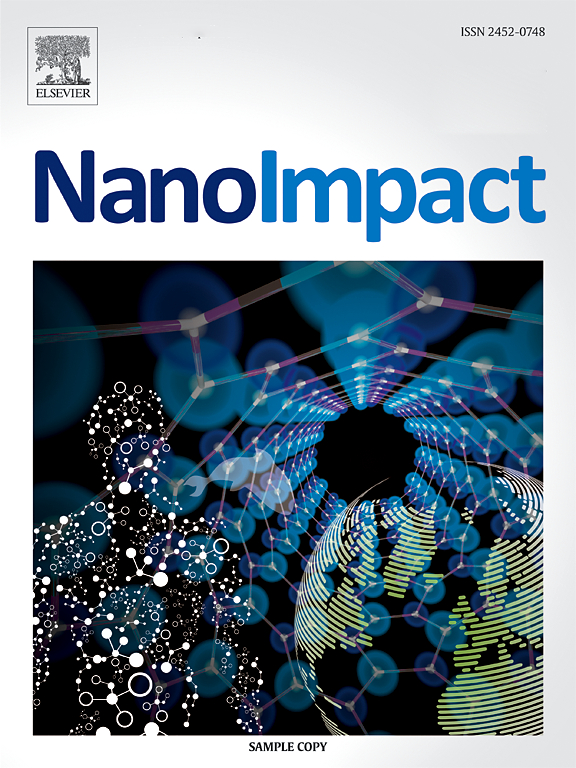纳米颗粒诱导肾小球内皮渗漏,促进蛋白尿水平
IF 4.7
3区 环境科学与生态学
Q2 ENVIRONMENTAL SCIENCES
引用次数: 0
摘要
纳米材料以其优异的性能被广泛应用于各个领域。然而,人体长期暴露于纳米材料的环境中可能会导致一些病理和生理变化,如肾小球滤过屏障(GFB)的破坏,从而导致高通透性和可滤性白蛋白的产生。肾小球蛋白尿是由GFB功能衰竭引起的,这可能是由Notch1信号通路的激活引起的。肾小球内胆减少导致内皮细胞间VE-cadherin水平降低,导致内皮渗漏。如前所述,某些纳米颗粒,如带负电荷的适当大小的金纳米颗粒,可以通过破坏血管内皮细胞之间的连接直接促进内皮细胞渗漏的发生,这一过程被称为纳米材料诱导的内皮细胞渗漏(NanoEL)。本研究首先合成了带负电的直径为20 nm的Au纳米粒子。通过将20 nm Au NPs与单层连续HUVECs共孵育,我们发现合成的20 nm Au NPs可以破坏紧密连接,导致内皮细胞渗漏。此外,通过构建肾小球血管内皮细胞间内皮渗漏模型,我们证实20 nm Au NPs可在肾小球内皮细胞间产生NanoEL,其下游过程与Notch信号激活一致,导致尿蛋白升高。这项研究的结果增加了对纳米颗粒在复杂生物系统中的行为的理解。本文章由计算机程序翻译,如有差异,请以英文原文为准。
Nanoparticles induced glomerular endothelial leakiness promoting albuminuria level
Nanomaterials have been widely used in various fields due to their excellent properties. However, the long-term exposure of humans to the environment of nanomaterials may lead to some pathological and physiological changes, such as the disruption of the glomerular filtration barrier (GFB), which can lead to high permeability and filterable albumin. Glomerular albuminuria results from the failure of the GFB, which may be caused by activation of the Notch1 signaling pathway. The reduction of glomerular endocalyx results in the level of VE-cadherin being diminished between endothelial cells, leading to leakiness in the endothelium. As previously discovered, certain nanoparticles, such as negatively charged gold nanoparticles of appropriate size, can directly facilitate the onset of endothelial leakiness through disrupting connections between vascular endothelial cells, in a process known as nanomaterial-induced endothelial leakiness (NanoEL). In this study, the negatively charged Au NPs with a diameter of 20 nm were synthesized first. Through the co-incubation of 20 nm Au NPs with a single layer of continuous HUVECs, we revealed that the synthesized 20 nm Au NPs could break the tight junctions and cause endothelial cell leakage. In addition, by constructing an endothelial leakage model between glomerular vascular endothelial cells, we confirmed that 20 nm Au NPs can generate NanoEL between glomerular endothelial cells, involving downstream processes coinciding with Notch signaling activation, resulting in the increase of urinary protein. The results of this study add to the understanding of the behaviour of nanoparticles in complex biological systems.
求助全文
通过发布文献求助,成功后即可免费获取论文全文。
去求助
来源期刊

NanoImpact
Social Sciences-Safety Research
CiteScore
11.00
自引率
6.10%
发文量
69
审稿时长
23 days
期刊介绍:
NanoImpact is a multidisciplinary journal that focuses on nanosafety research and areas related to the impacts of manufactured nanomaterials on human and environmental systems and the behavior of nanomaterials in these systems.
 求助内容:
求助内容: 应助结果提醒方式:
应助结果提醒方式:


